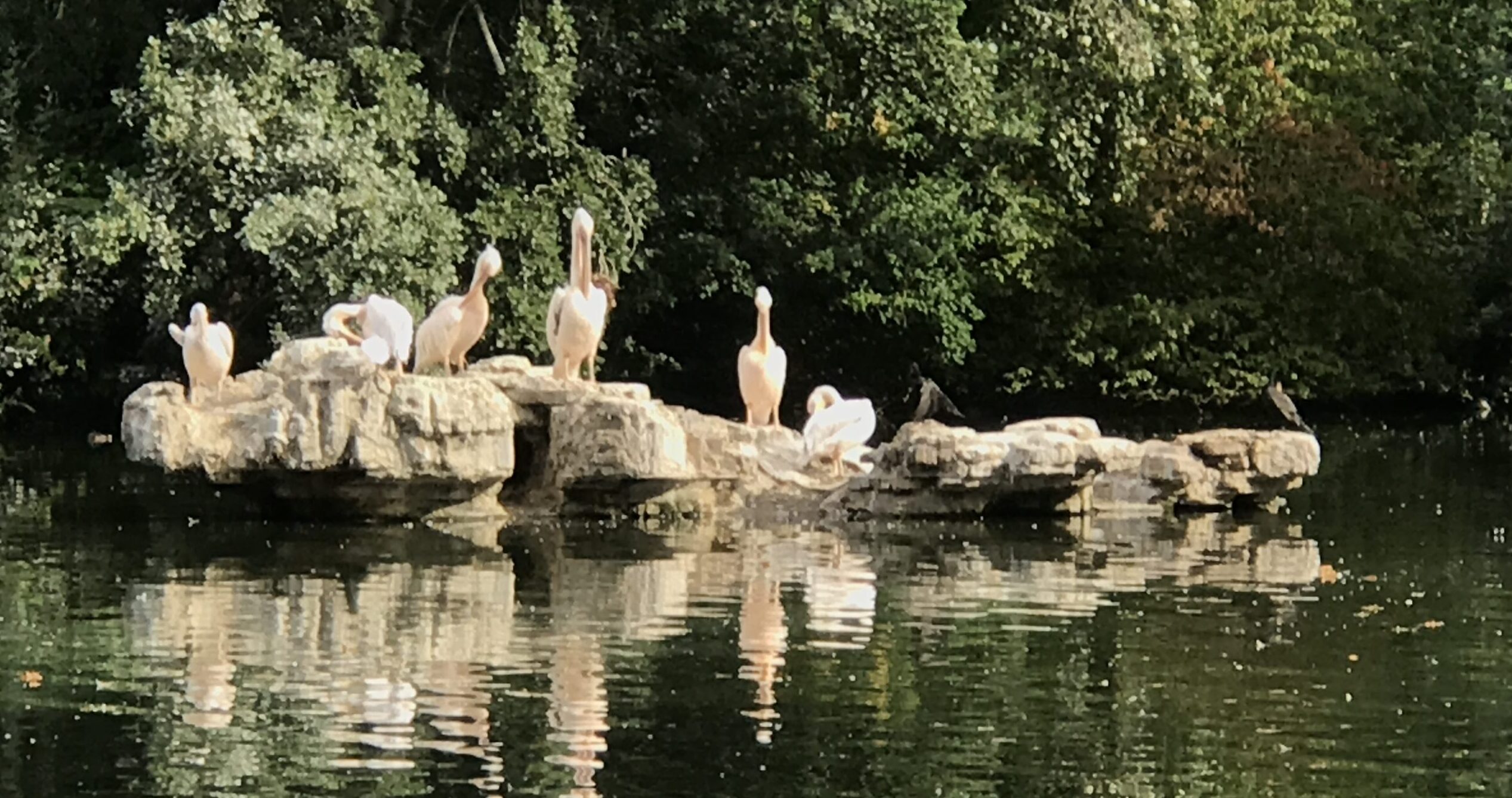
Oh, a wondrous bird is the pelican!
Dixon Lanier Merritt (1913)
His bill holds more than his belican.
He takes in his beak
Food enough for a week.
But I’ll be darned if I know how the helican.
The lake in St James’s Park is home to a large selection of wildfowl: there are moorhens and coots, geese and ducks of various stripes in abundance, swans (white and black variations thereof) and … great white pelicans.
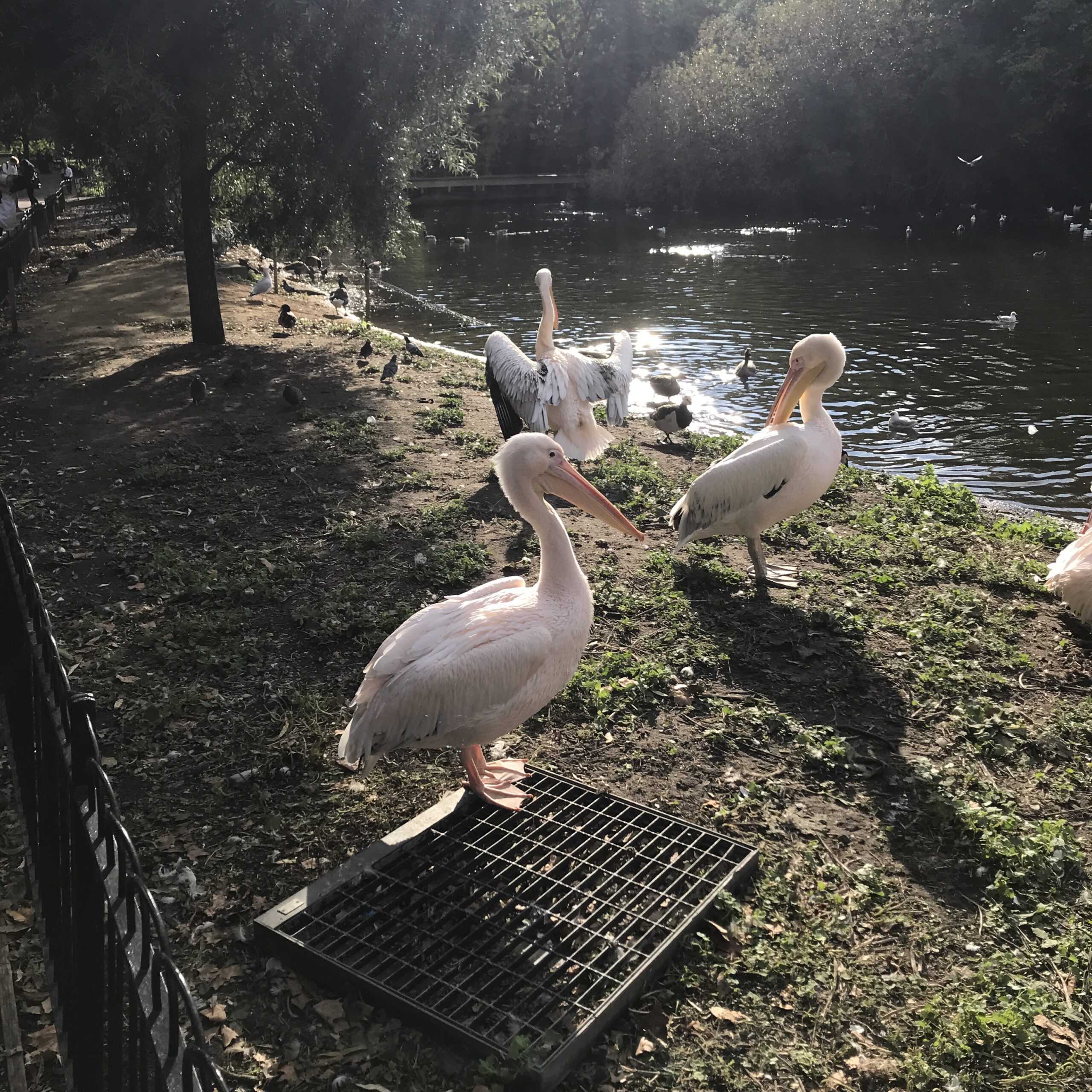
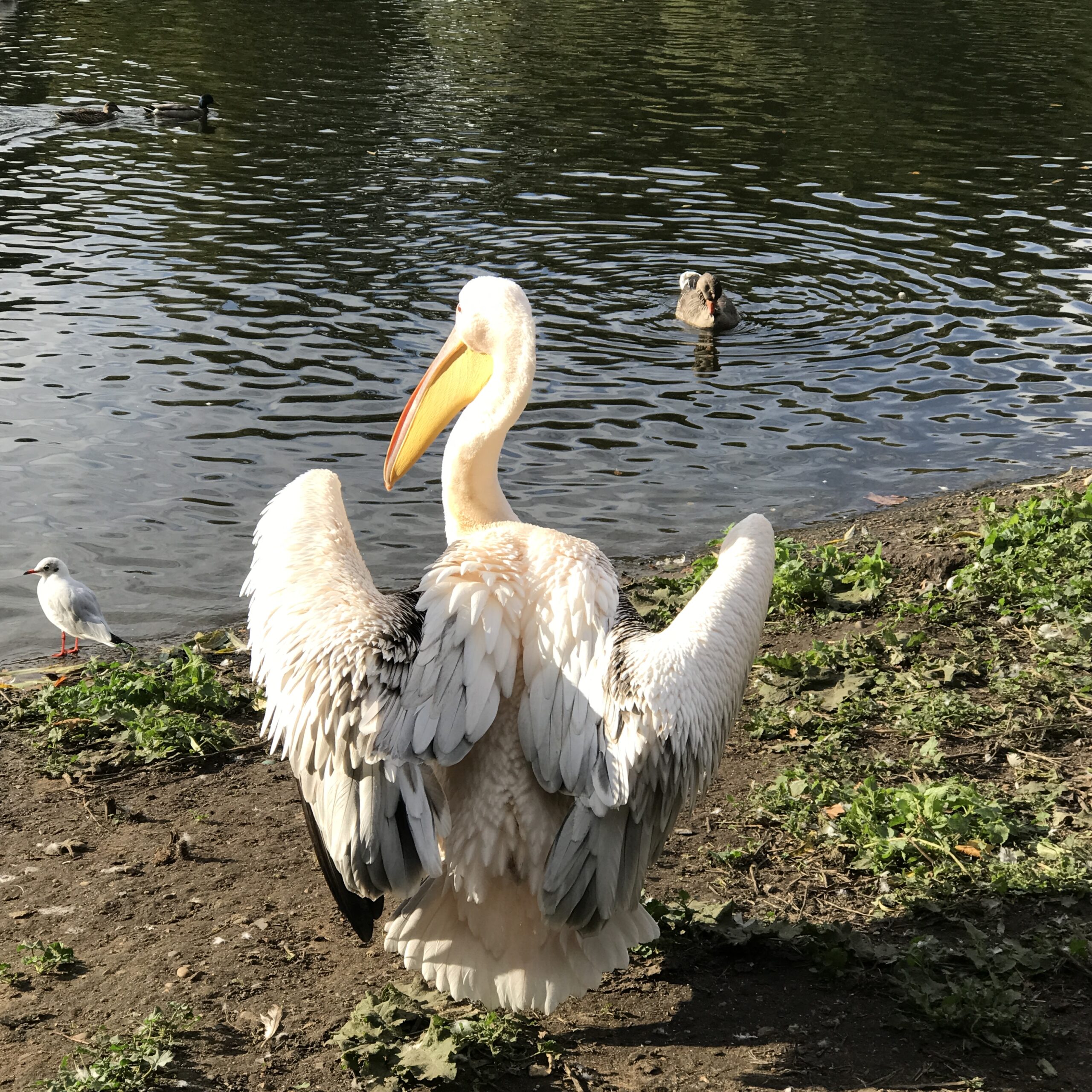
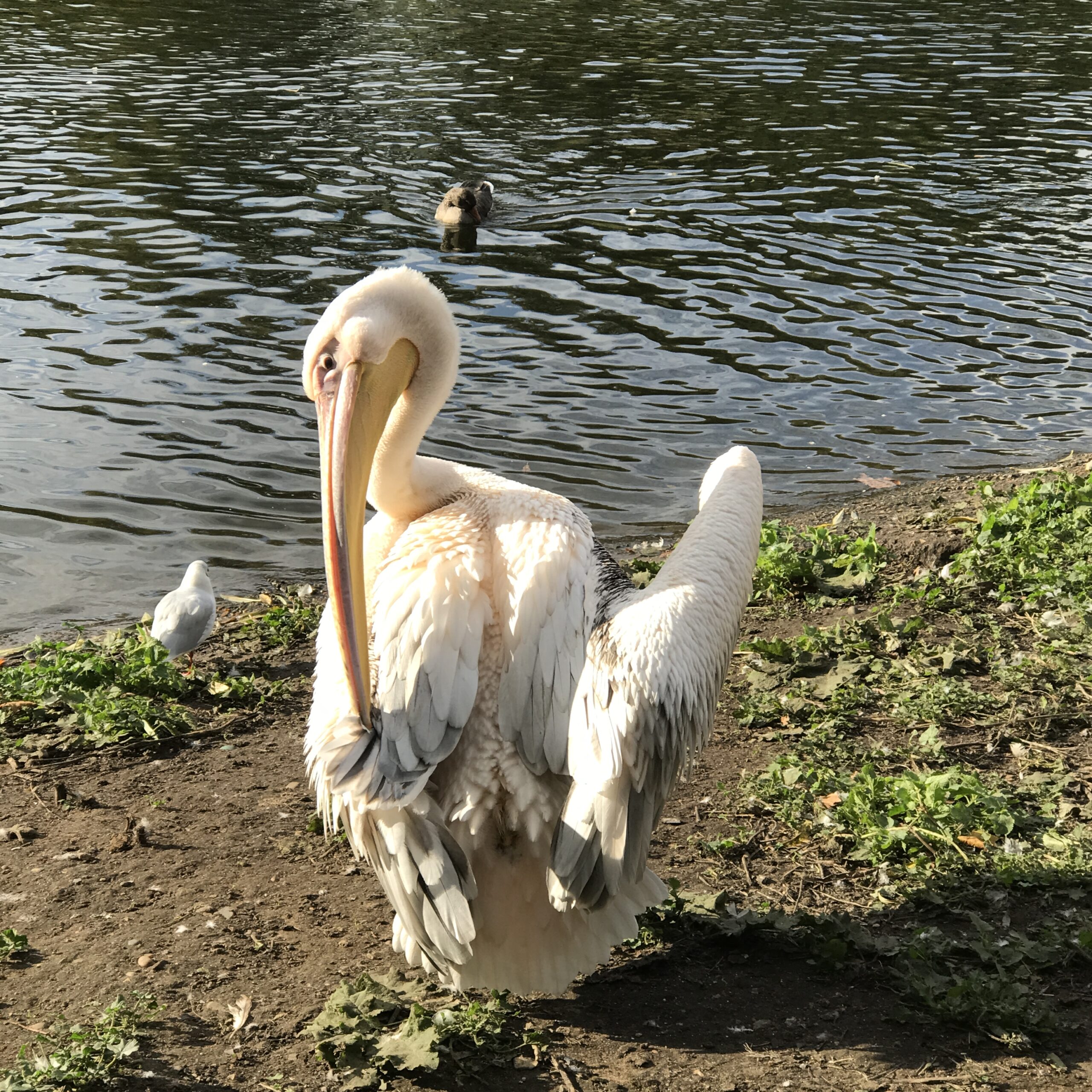
These are royal birds, first introduced to the park in 1664 when the Russian ambassador presented some to Charles II. (Which is not such a left field gift as it might seem – Charles’s father and grandfather both had a menagerie in the park. In fact the road that borders it – Birdcage Walk – is named after James I’s aviaries.)
Since the 1660s over 40 pelicans have called the park home although, disappointingly, the current residents aren’t descendants of the originals – in 300 years not one pelican has been born to the park’s birds.
There is a thriving ‘squadron’ (apparently the collective noun of pelicans, although ‘scoop’ is sometimes used) of six birds at present. In the 1970s there was a lone female, but the population has been refreshed/supplemented since then. You can see them basking in the sun or being fed each afternoon near Duck Island, at the east end of the lake.
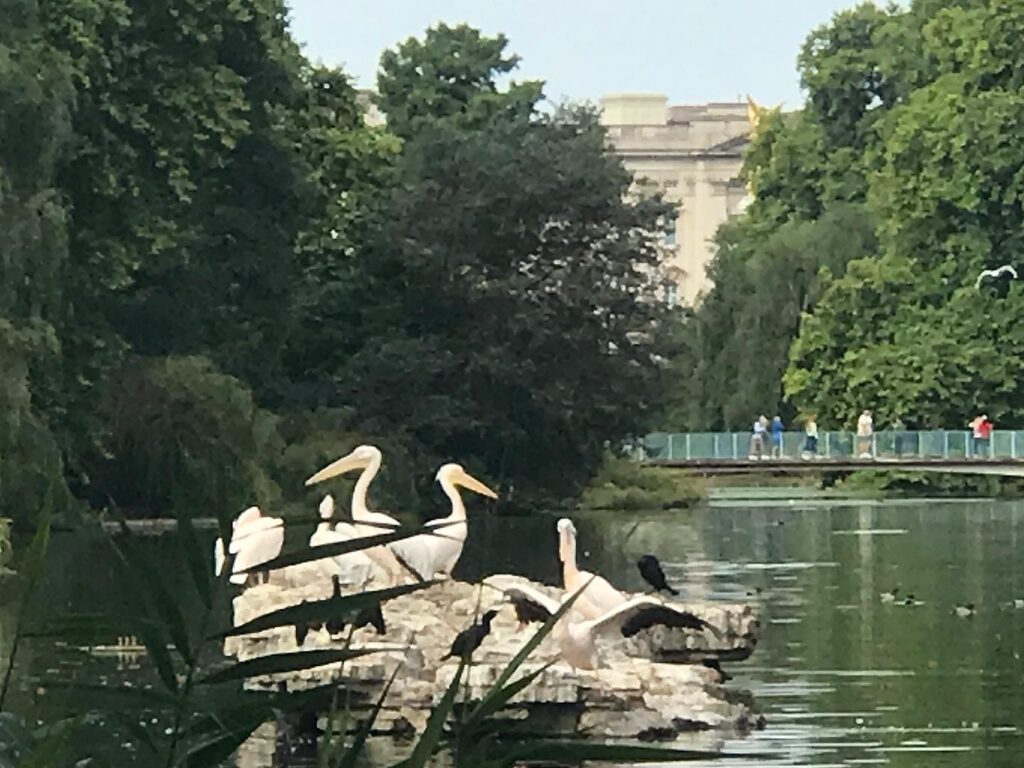
The three most recent arrivals are Sun, Moon and Star (presumably the Royal Parks had Gwyneth Paltrow on naming duty that week) who joined Gargi, Isla and Tiffany; yes there is a royal pelican called Tiffany, although she’s named after the Tiffany & Co Foundation who part-funded the bird’s arrival).
They are BIG birds (the Royal Parks website says they have the second largest wingspan of any bird, anything up to 3.6m) and can weigh up to 15kg. They’ve been known to live over 50 years in captivity, although the lifespan in the wild is generally 15-15 years.
To get a monthly email of my latest blog posts, just put your email in the box below.
Or follow my facebook page for London posts and photos. And I’m also on Instagram.

